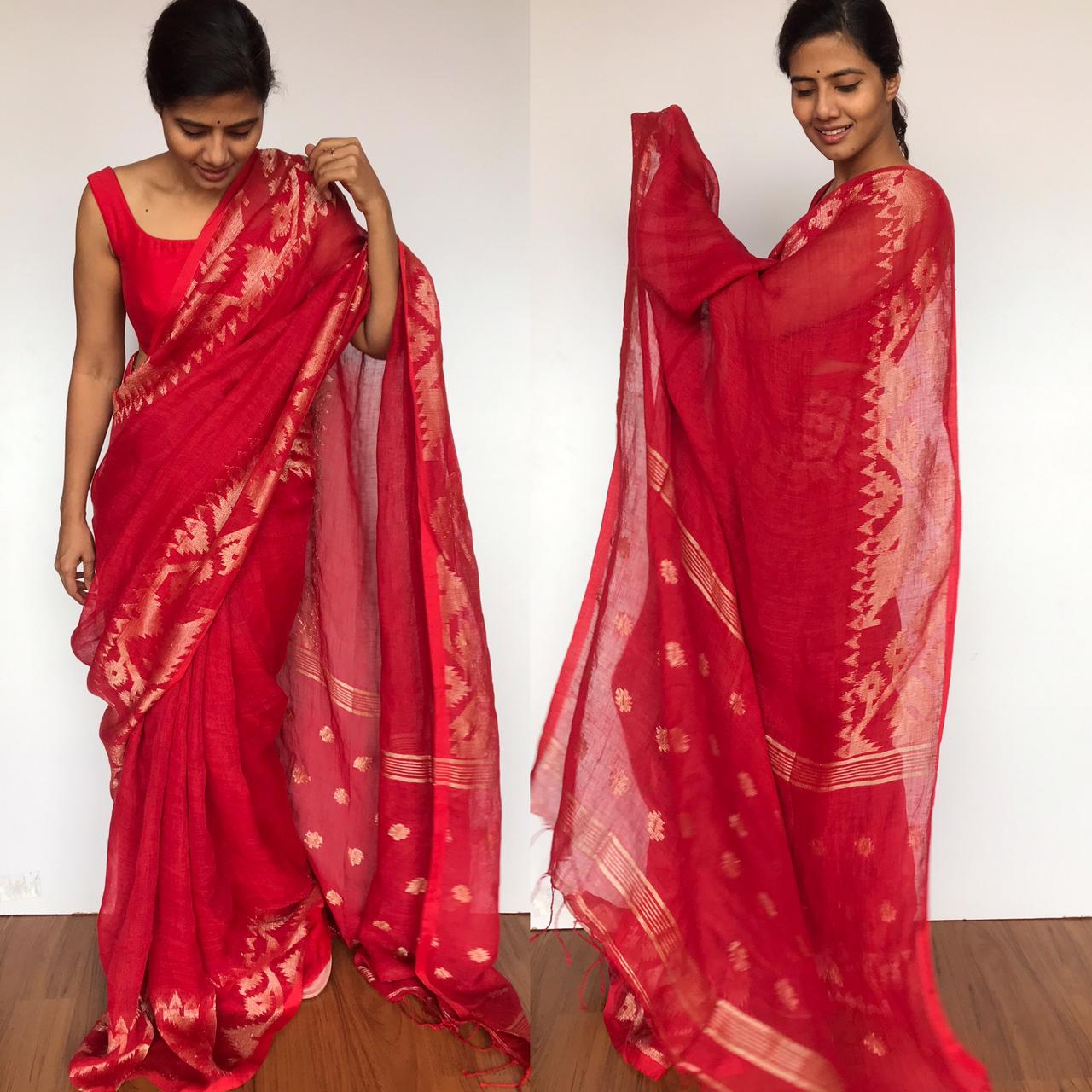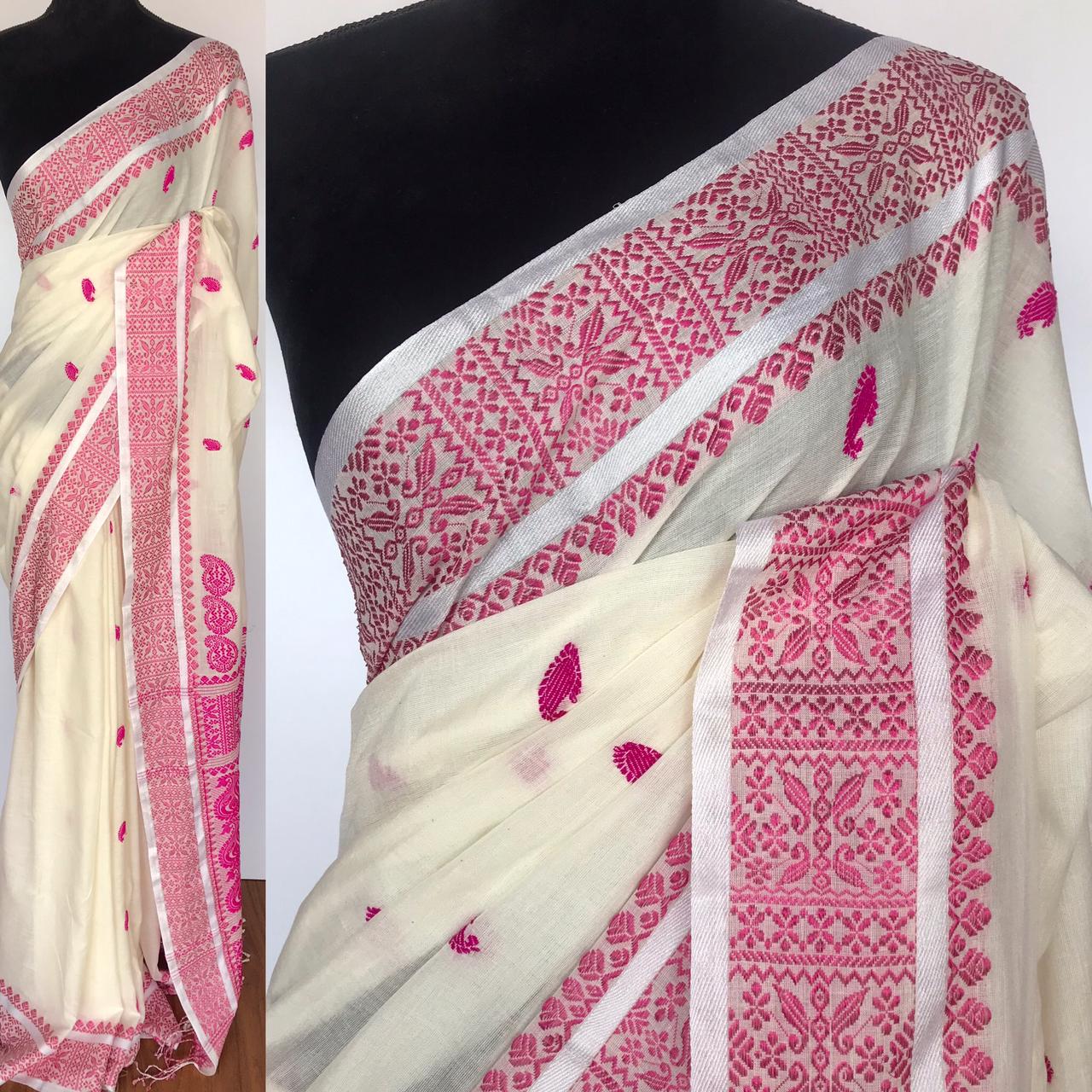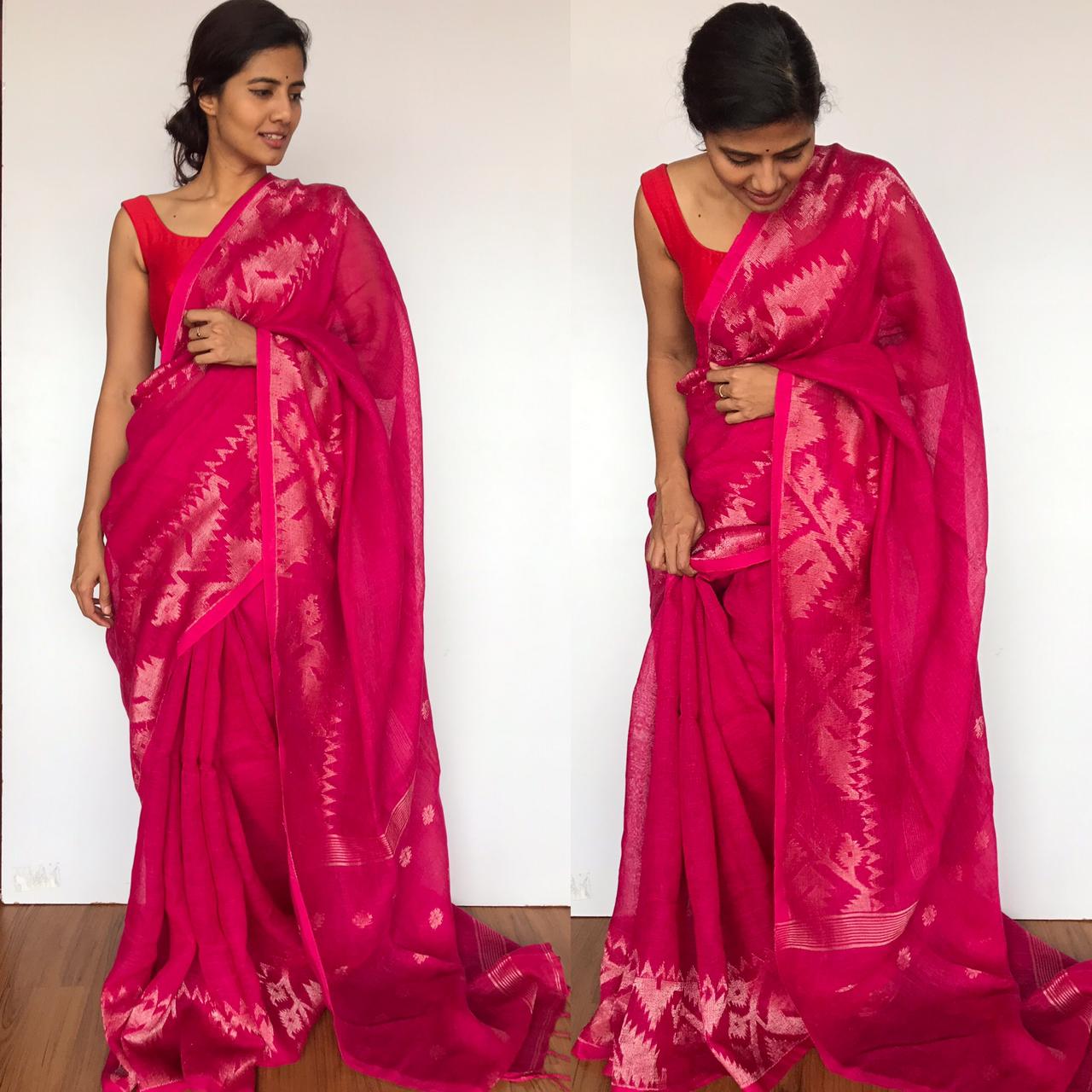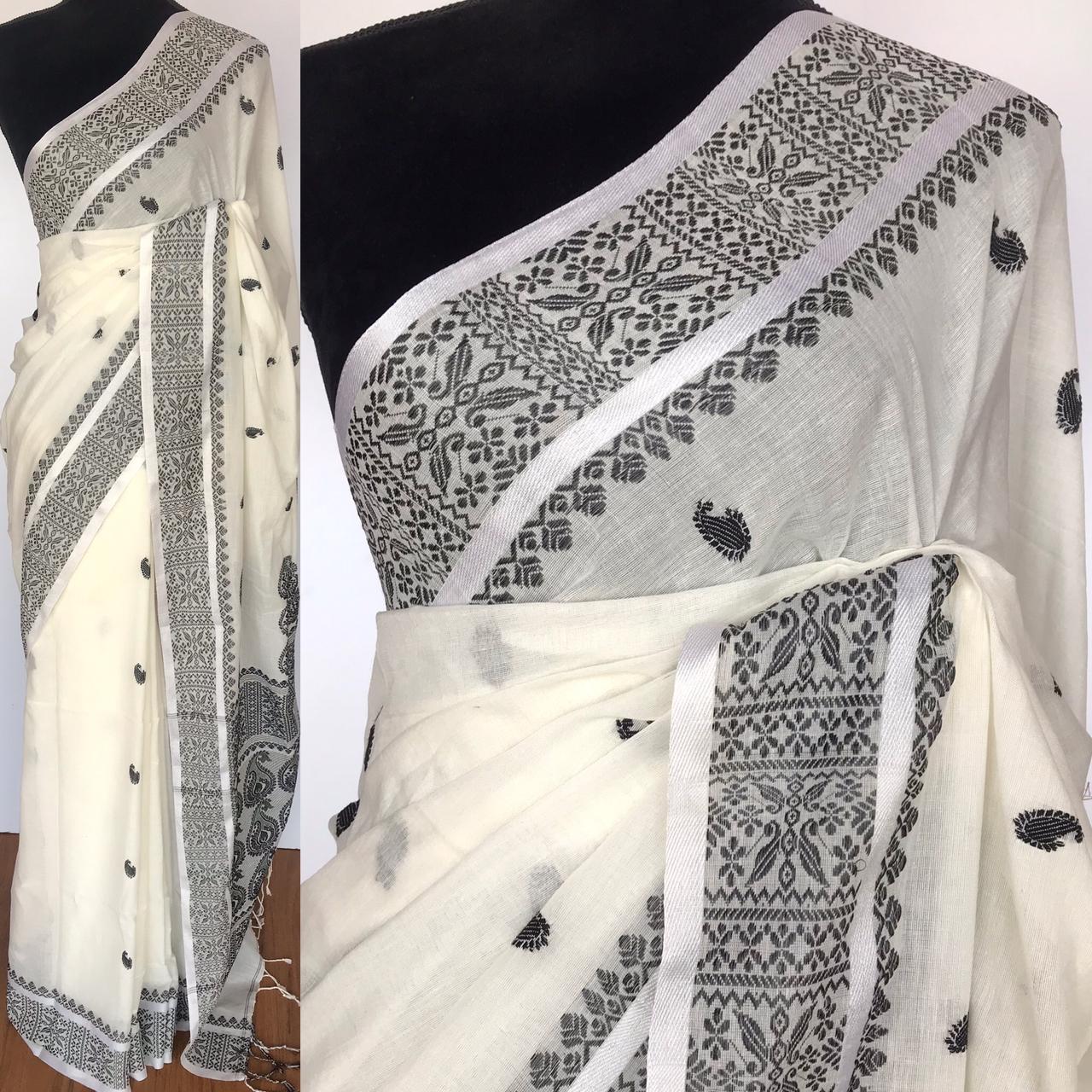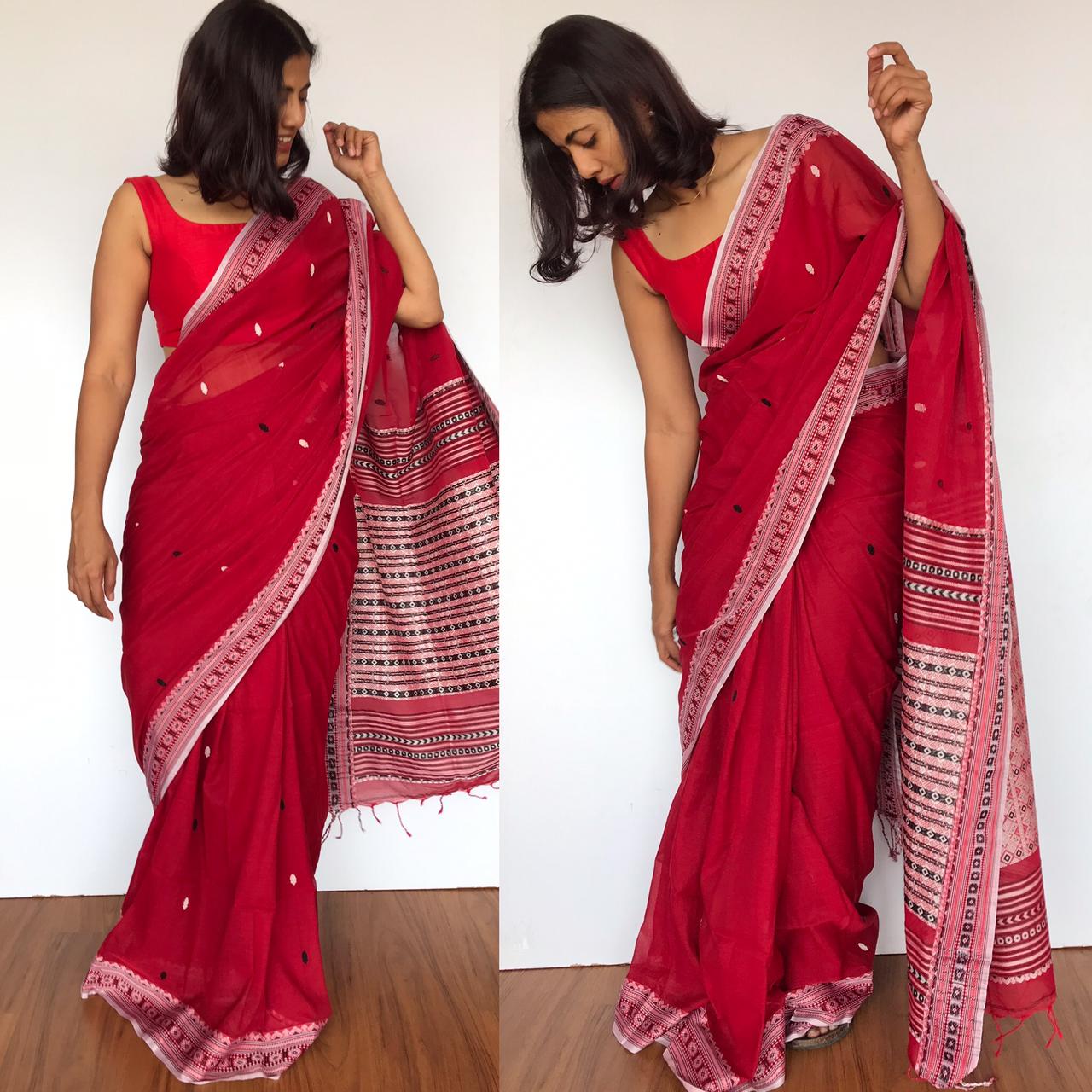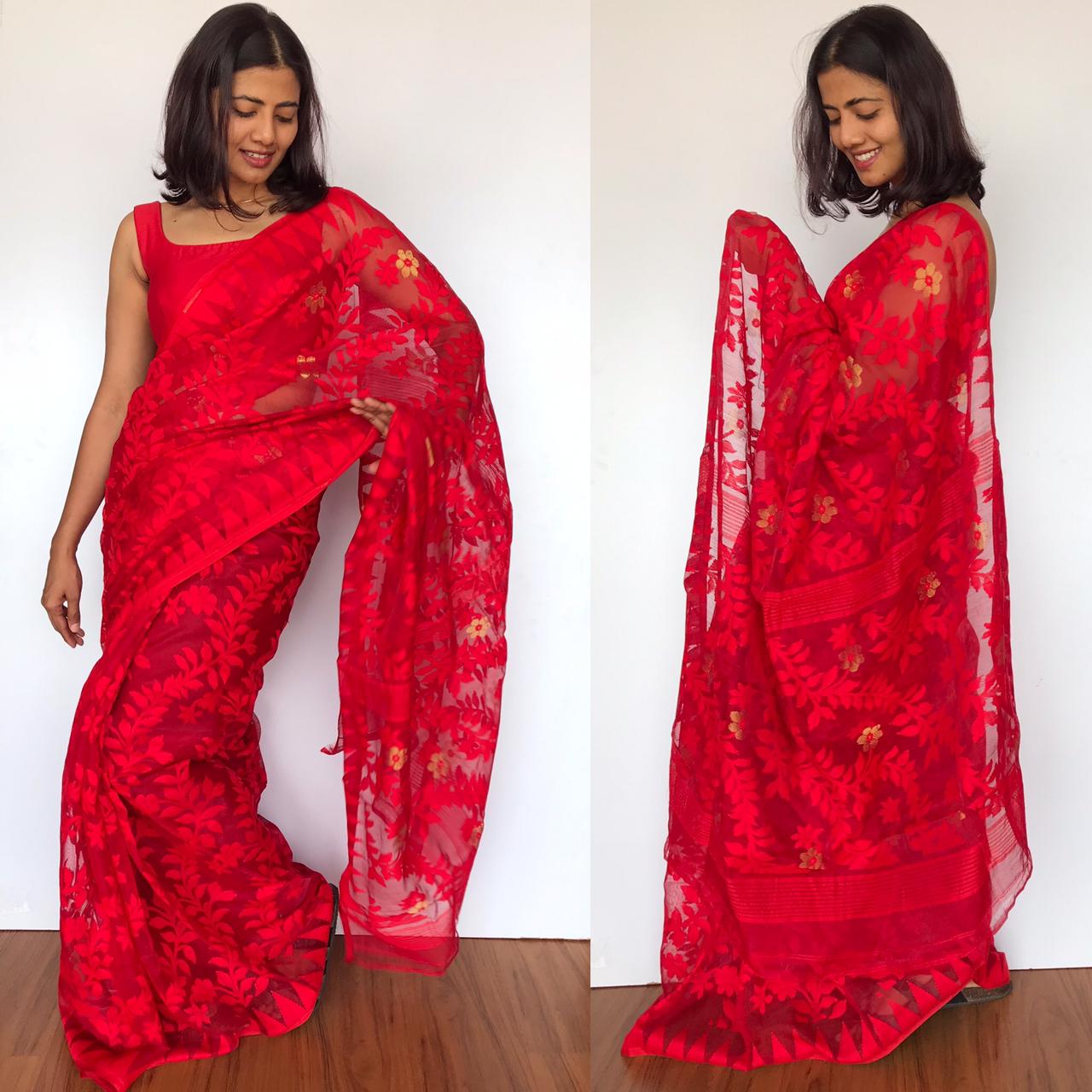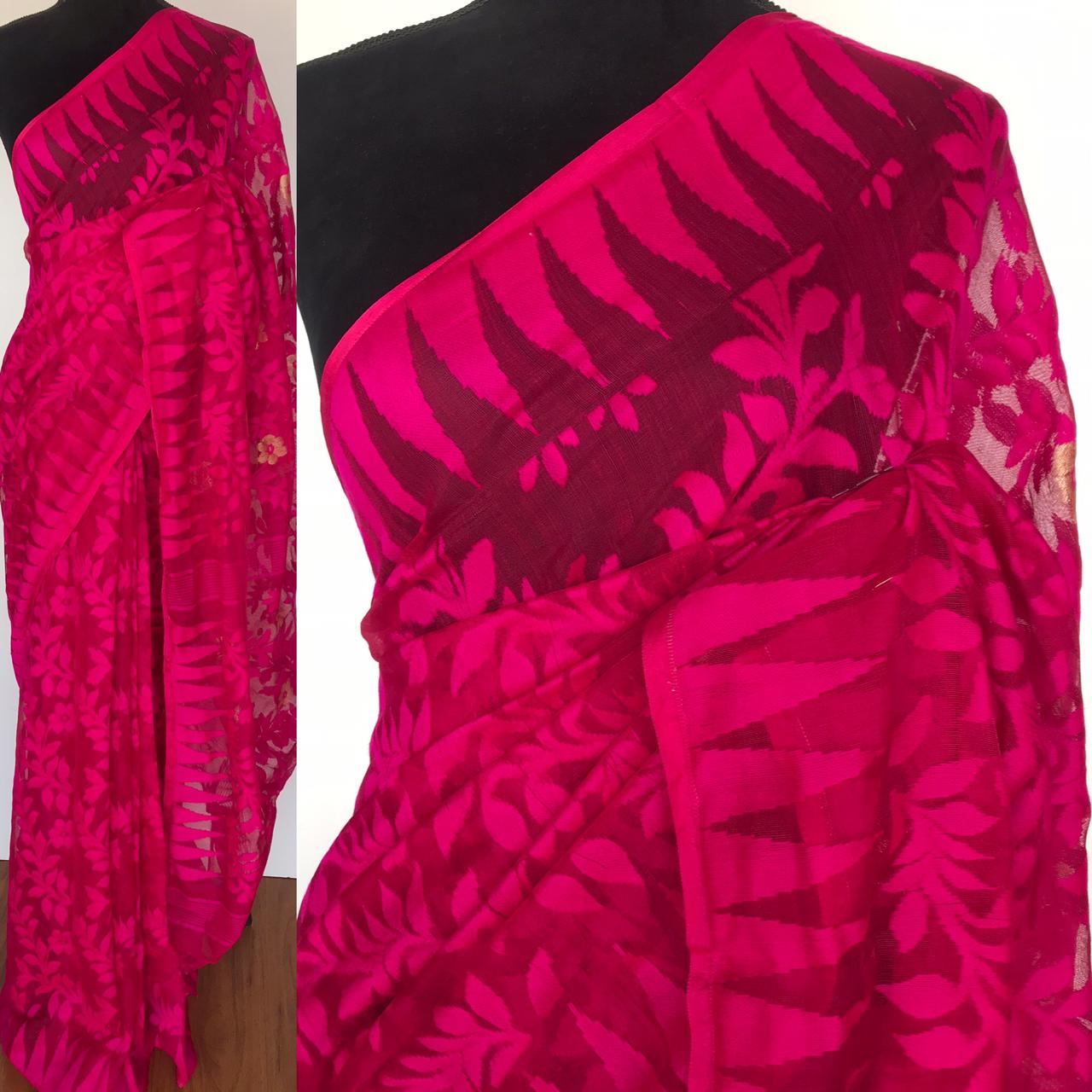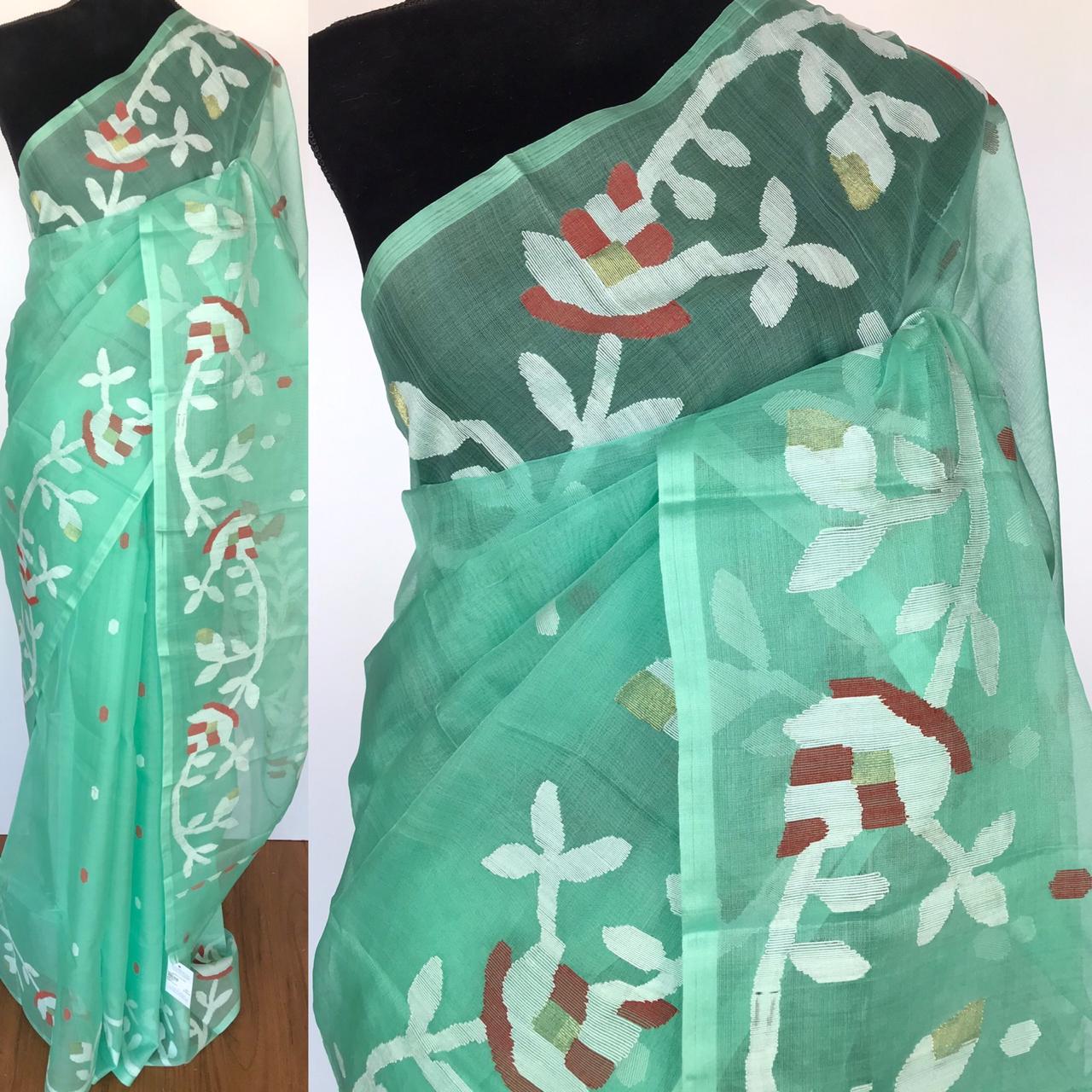Dhakai Jamdani Saree | A Versatile Drape for different Occasions
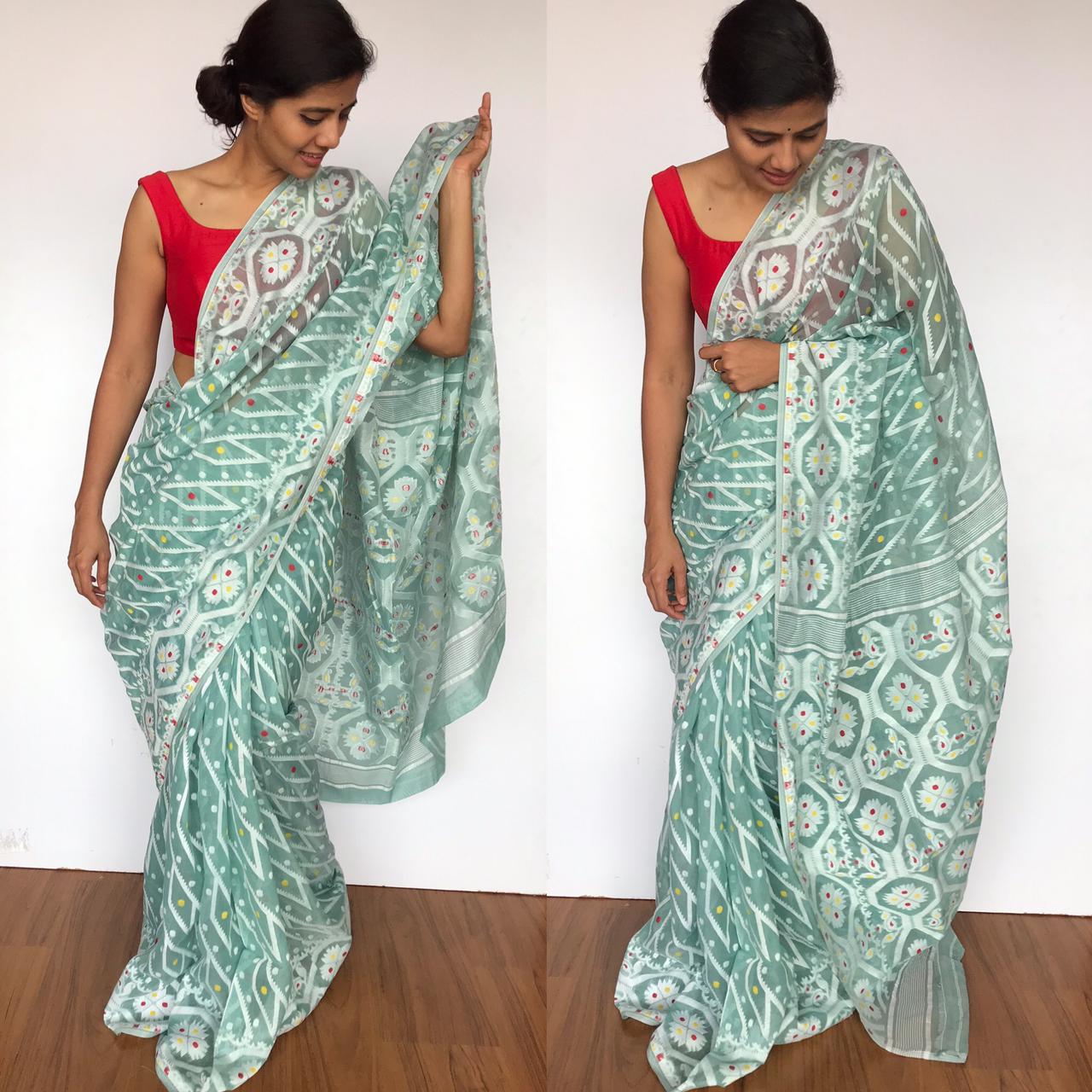
Men and women are becoming equal everywhere. If there is one thing that men envy about women is the infinite number of clothing choices that get to select for different occasions that take place near them. When we talk about sarees, there is a broad range of preferences to select from and each day there is a creative innovation given to our sarees world to make it look more practical for the millennials. Such a creation is the Dhakai Jamdani saree. These sarees are being highly praised for their vibrant shades. They are also lightweight and are partially transparent but in the most stunning way. This article is going to be an insight into how the Jamdani sarees came into existence and are making their way to the trending chart of fashion selections in sarees.
A chronology of the Jamdani sarees
These sarees have their ancestry from the city of joy, West Bengal. People from that region adore the kind of fabric utilized in these sarees and you can find many appearances of the Jamdani sarees even for a grander occurrence in Bengal. But it is lesser-known to everyone, that Jamdani sarees have had their source from Dhaka, which is at present named Bangladesh and thus the name Dhakai Jamdani saree arose. One can find many analogies in the ancient writings mentioning the finest muslin fabric that has been used to weave these sarees, but it was the royal Mughal dynasty that acclaimed to have recognized its supreme excellence.
Even after bases veered around and the Britishers took over India, the trade of the muslin fabric did not unwind. Surely the magnificence of the Jamdani sarees had an impeccable influence on its admirers which lead to its vogue among the Europeans and the Arab population. It was during the 19th century, the British economy saw a harsh decline in Jamdani sarees production which lead to the complete denial of the fabric. After India received its independence, a majority of weavers especially the skilled ones from Bangladesh had to flee India but some of them found solace in the newly partitioned state of West Bengal. Thus began a fresh chapter for the lost knack of the Dhakai Jamdani saree.
The weaving process
It is believed that one Jamdani saree takes almost a year to be weaved and ready to go out into the markets. It is only because the weaving process is a tedious and prolonged technique as it is done very diligently to generate a masterpiece outcome. In a regular weft, the neat, thin plain fabric clothing chunk is just stitched in a horizontal or a zig-zag pattern.
But here, Jamdani sarees are created using the complex symmetrical weft where a little thicker threads are utilized to include some perplexing motif designs. This provides a classy look to the saree. Like no other saree weaving, these sarees are not by the printing or sketching the motifs but instead, they are drawn on a graph paper which is placed under the warp to get a replica of an exquisite motif design. Sometimes these thick-colored threads are intertwined using some bamboo sticks to ensure there are no breakage or undesirable mistakes made during the weaving method. Still, this process is intact in many parts of the world and yet it is the most intensively made fabric saree that has ever existed.
Other types of Jamdani sarees
So far we have seen how the Dhakai Jamdani sarees are being in huge demand in the markets, thanks to their international recognition that was made in the Mughal era. Jamdani sarees, though have the majority of their production cropping from Bangladesh, some other varieties have also sprouted from the very state only with some minute differences. They might have a slight disparity in their extravaganza motifs or representation of the specific regions in their respective sarees.
1. Shantipur Jamdani sarees
These sarees are produced in West Bengal, particularly in an area known as Shantipur. They differ from the Dhakai Jamdani saree by having motifs that represent patterns and stripes on a delicate fabric.
2. Tangail Jamdani sarees
Manufactured in the parts of West Bengal, Tangail sarees are similar to the Shantipur sarees with the only difference being in the motifs. Here is a Dhakai Jamdani saree, one can find conventional work of flowers both big and small-sized, fish motifs, etc.
3. Dhaniakhali Jamdani sarees
Having a much tighter texture when compared to the previous type of Dhakai Jamdani sarees, these are also created in a place named Dhaniakhali situated in West Bengal. One can find these sarees mostly in darker hues with some contradicting border colors.
The modern state of the craft
If we happen to notice in the historical days, the Dhakai Jamdani sarees were available only in bleached white shades. But due to the increased demand, these sarees are currently being dyed with some lighter hues like pink, yellow, orange, and green with some having contrast borders made of a darker color and even from a different fabric altogether.
Originally, these Jamdani sarees were craved from pure cotton fabric but as it was not reasonable for many common people and to increase their supply the weavers introduced a portion of silk along with it to help it get a more gorgeous and pleasing look.
In West Bengal, you can find Dhakai Jamdani saree is brought by many from distinct age groups. Some of these sarees have varying colors for both the body and border of the saree which makes it more desirable for the younger people.
Conclusion
As these Jamdani sarees have a fine texture and an alluring smoothness to them, they can be worn very comfortably for every season and even for a casual-chic party also. Mirra clothing has a unique array of Jamdani sarees that are made out of either pure cotton or pure silk fabric or there is an extraordinary blend of both the fabrics in one beautiful saree too. There are lots of options to choose from and the best part of it is that along with your saree, you can purchase any blouse of your choice which is both a time saver and inexpensive alternative too.
